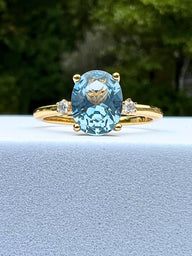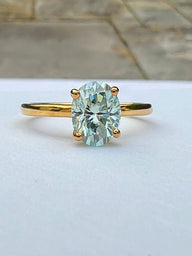FREE SHIPPING | BUY NOW, PAY LATER
In 2003, around the time the general public was made aware of blood diamonds, the United Nations General Assembly created the Kimberley Process Certification Scheme to put an end to the diamond trade, which was financing conflicts, slavery, and human rights violations. With arguably good intentions and solid reasoning, the Kimberly Process showed a lot of promise in combating an unregulated diamond trade, but years later, it’s now apparent that the Kimberly Process is just a certification scheme, allowing bad actors to hide behind a thinly veiled guise.
The Kimberly Process: What is it and Why was it Implemented?
The Kimberley Process was developed to track and trace diamonds as they changed hands and traveled across continents. The original architects of the plan assumed that if every stone's origins were documented, unregulated mines would shut down and companies purchasing from mines associated with human rights violations would be shamed by consumers worldwide, hurting their oh-so-precious bottom line.

Why the Kimberly Process is a Sham
There's no legitimate tracking system!
Since the certification procedure focuses on uncut, rough diamonds, no specific diamond available on the worldwide market is eligible to receive it. The method essentially collapses before the diamonds ever leave the continent because there is no tracking system after the polishing stage, meaning that dirty diamonds get mixed in with clean diamonds, before changing hands multiple times before seeing the end consumer. Big jewelry companies know this. Even if they pinky promise that their diamonds are clean and come from XYZ mine in XYZ country (charging you a nice markup), it's not actually true. For example, recently, a well-known “ethical” jewelry company has been exposed for this. For legal reasons, we don’t want to get into it (you should see what they did to the poor guy that exposed them), but you can find an interesting video below.
The Kimberly Process Make No Mention of Human Exploitation
The Kimberley Process defines conflict diamonds as follows: "Rough diamonds used by rebel movements to fuel wars against legitimate governments. Their limited definition does not address child and slave labor, unsafe and deadly working conditions, and other human rights violations.

What Exactly Is a Conflict-Free Diamond, then?
The sad reality is that the Kimberley Process is inadequate and doesn’t help consumers know where their diamond came from, and if it was used to fund illegal and unethical activities.
With that being said, we would recommend purchasing either a lab diamond (which we don’t currently sell, but please get in touch if you’re interested!) or moissanite, which is cheaper, and more sparkly than a diamond. Lab diamonds are physically, chemically, and optically the same as mined diamonds, but you can get a much bigger stone with fewer inclusions for a better price.
To learn more about why we believed lab gemstones are superior to mined gemstones, please see our page on lab gemstones.







